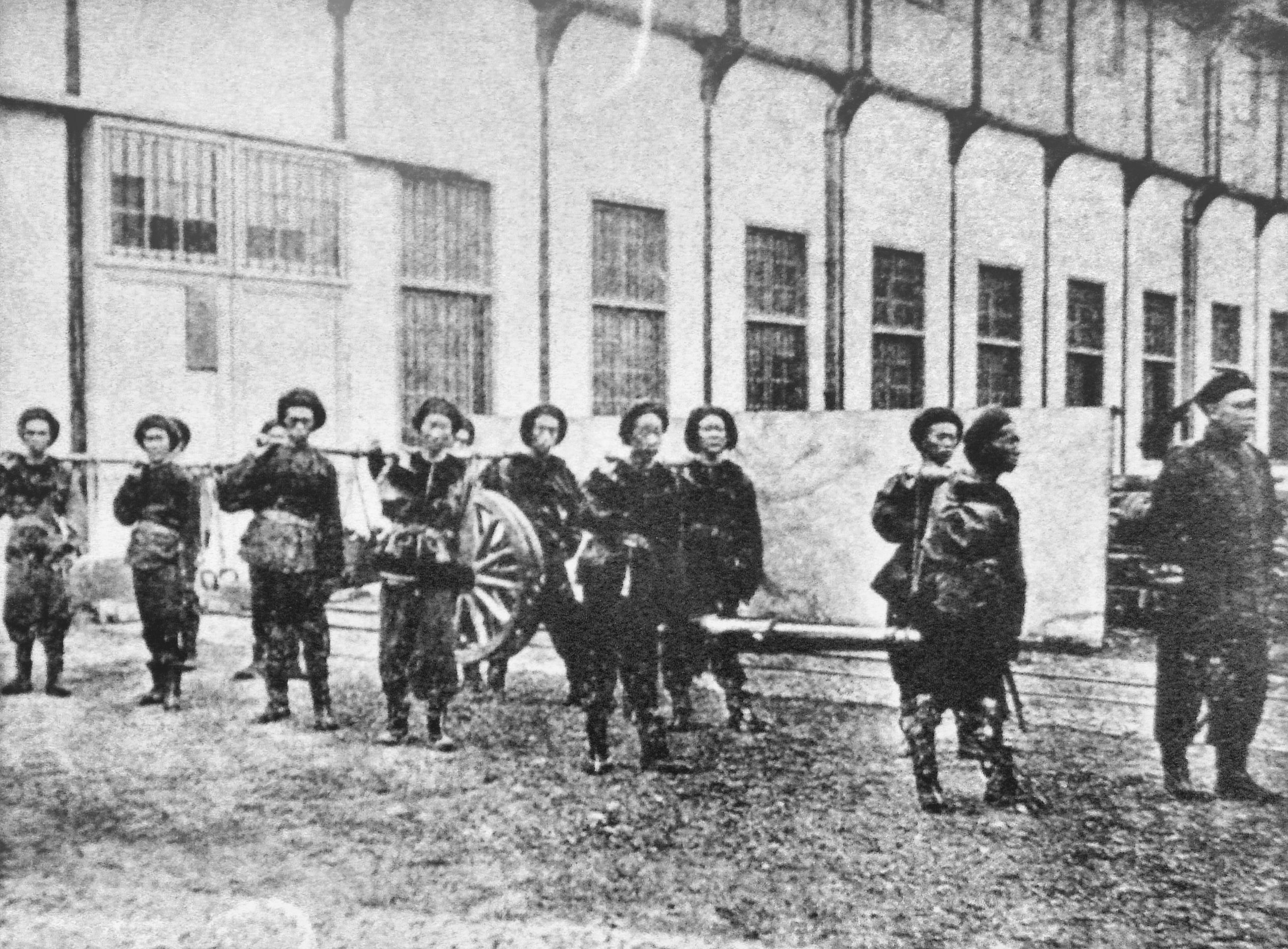Kiangnan Arsenal on:
[Wikipedia]
[Google]
[Amazon]
 Jiangnan Shipyard () is a historic shipyard in
Jiangnan Shipyard () is a historic shipyard in
listing
by GlobalSecurity.org
Collection of photos of ships built by Jiangnan Shipyard
{{Authority control Shipbuilding companies of China Manufacturing companies based in Shanghai Manufacturing companies established in 1865 Firearm manufacturers of China Shipyards of China Chinese companies established in 1865
 Jiangnan Shipyard () is a historic shipyard in
Jiangnan Shipyard () is a historic shipyard in Shanghai
Shanghai (; , , Standard Mandarin pronunciation: ) is one of the four direct-administered municipalities of the People's Republic of China (PRC). The city is located on the southern estuary of the Yangtze River, with the Huangpu River flow ...
, China
China, officially the People's Republic of China (PRC), is a country in East Asia. It is the world's most populous country, with a population exceeding 1.4 billion, slightly ahead of India. China spans the equivalent of five time zones and ...
. The shipyard has been state-owned since its founding in 1865 and is now operated as Jiangnan Shipyard (Group) Co. Ltd.
Before 2009, the company was south of central Shanghai at 2 Gaoxing Road (). In 2009, the shipyard was moved to Changxing Island, in the mouth of the Yangtze River
The Yangtze or Yangzi ( or ; ) is the longest list of rivers of Asia, river in Asia, the list of rivers by length, third-longest in the world, and the longest in the world to flow entirely within one country. It rises at Jari Hill in th ...
to the north of urban Shanghai. ().
The shipyard builds, repairs and converts both civilian and military ships. Other activities include the manufacture of machinery and electrical equipment, pressure vessels and steel works for various land-based products.
Ship building
The shipyard main production is:liquefied gas Liquefied gas (sometimes referred to as liquid gas) is a gas that has been turned into a liquid by cooling or compressing it. Examples of liquefied gases include liquid air, liquefied natural gas, and liquefied petroleum gas.
Liquid air
At the ...
carriers, car carrier
Roll-on/roll-off (RORO or ro-ro) ships are cargo ships designed to carry wheeled cargo, such as cars, motorcycles, trucks, semi-trailer trucks, buses, trailers, and railroad cars, that are driven on and off the ship on their own wheels or usin ...
s, crude oil
Petroleum, also known as crude oil, or simply oil, is a naturally occurring yellowish-black liquid mixture of mainly hydrocarbons, and is found in geological formations. The name ''petroleum'' covers both naturally occurring unprocessed crude ...
tankers, Panamax bulk carrier
A bulk carrier or bulker is a merchant ship specially designed to transport unpackaged bulk cargo — such as grains, coal, ore, steel coils, and cement — in its cargo holds. Since the first specialized bulk carrier was built in 1852, econom ...
s, Handymax
Handymax and Supramax are naval architecture terms for the larger bulk carriers in the Handysize class. Handysize class consists of Supramax (50,000 to 60,000 DWT), Handymax (40,000 to 50,000 DWT), and Handy (<40,000 DWT). The ships are used for ...
bulk carriers, Lake suitable bulk carriers, multi-purpose cargo ship
A cargo ship or freighter is a merchant ship that carries cargo, goods, and materials from one port to another. Thousands of cargo carriers ply the world's seas and oceans each year, handling the bulk of international trade. Cargo ships are usu ...
s, and fast feeder container ship
A container ship (also called boxship or spelled containership) is a cargo ship that carries all of its load in truck-size intermodal containers, in a technique called containerization. Container ships are a common means of commercial intermodal ...
s. The shipyard recently delivered 23,000 TEU LNG-fueled containership the ''CMA CGM Champs Elysées'', but there was a delay of at least 10 months.
See also
*Chinese aircraft carrier programme
Since the 1970s, China's People's Liberation Army Navy (PLAN) has had ambitions to develop and operate aircraft carriers, and since 1985 has acquired four retired aircraft carriers for study; namely, the British-built Australian and the ex-S ...
*Foochow Arsenal
The Foochow Arsenal, also known as the Fuzhou or Mawei Arsenal, was one of several shipyards created by the Qing Empire and a flagship project of French assistance to China during the Self-Strengthening Movement. The shipyard was constructed unde ...
*Great Hsi-Ku Arsenal The Great Hsi-Ku Arsenal (), was a Qing Dynasty Imperial Arsenal that stored munitions, rifles, and millions of rounds of ammunition. In addition tons of rice and medical supplies were stored there. The facility was guarded by Qing Imperial troops u ...
*Hanyang Arsenal
Hanyang Arsenal () was one of the largest and oldest modern arsenals in Chinese history.
History
Originally known as the ''Hubei Arsenal'', it was founded in 1891 by Qing official Zhang Zhidong, who diverted funds from the Nanyang Fleet in Guang ...
*Naval history of China
The naval history of China dates back thousands of years, with archives existing since the late Spring and Autumn period regarding the Chinese navy and the various ship types employed in wars.Needham, Volume 4, Part 3, 678. The Ming dynasty of Chi ...
*Self-Strengthening Movement
The Self-Strengthening Movement, also known as the Westernization or Western Affairs Movement (–1895), was a period of radical institutional reforms initiated in China during the late Qing dynasty following the military disasters of the Opium ...
*Taiyuan Arsenal
Taiyuan Arsenal ({{Zh, t=太原兵工廠) was established by the Shanxi warlord, Yan Xishan who had become the Governor-General of Shanxi province in 1912. From the outset he was very interested in building an arsenal for manufacturing weapons to ...
References
External links
* *listing
by GlobalSecurity.org
Collection of photos of ships built by Jiangnan Shipyard
{{Authority control Shipbuilding companies of China Manufacturing companies based in Shanghai Manufacturing companies established in 1865 Firearm manufacturers of China Shipyards of China Chinese companies established in 1865